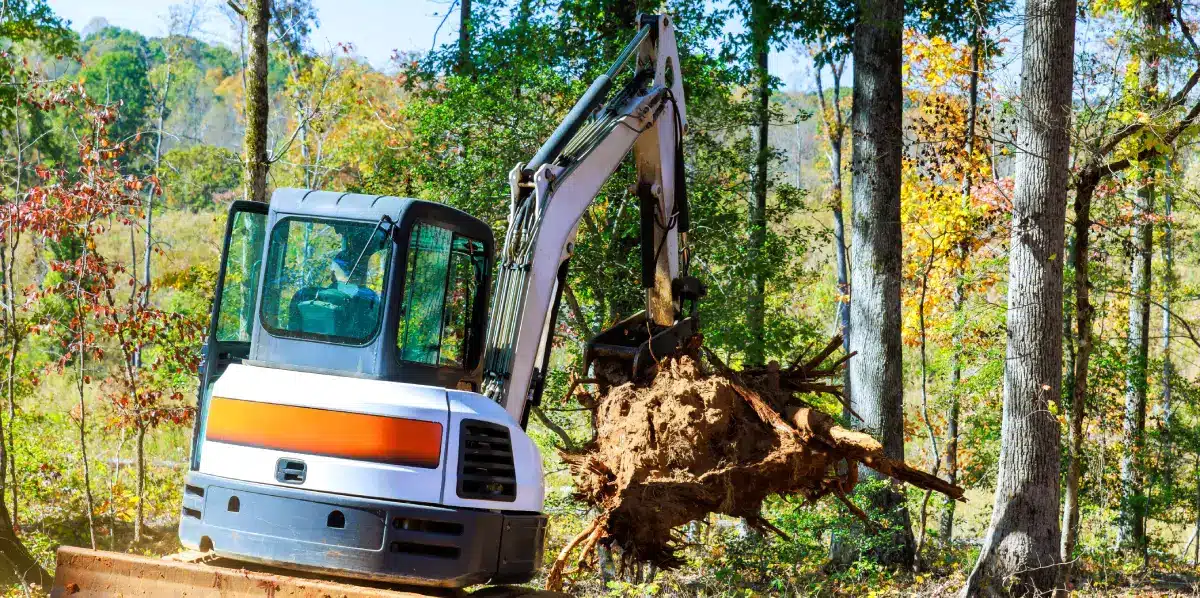Harvesters, delimbing machines, and chippers—forestry and railway equipment can be prone to breakdowns. However, it should be noted that malfunctions are often the result of misuse. When operators do not have the necessary experience to drive and handle them, this can cause damage or even accidents. These machines must comply with various technical standards (specific to the machine) and administrative standards (relating to health and safety at work). Lack of maintenance can also be one of the main causes of breakdowns in these forestry machines. But when a malfunction occurs, regardless of the cause, how can it be diagnosed and resolved?
Knowing how to observe the symptoms of a malfunction
To detect signs that your forestry mulcher needs maintenance or replacement, you need to pay attention to the smallest details, especially symptoms. As soon as you notice any unusual behavior, don't hesitate to check it out. This applies to all other forestry equipment, whether it is a chipper, a harvester, a forwarder, or other machinery.
Here are some signs that should alert you:
- Noises such as whistling, clanking, squeaking, or rattling, or unusual odors. These are anomalies that may indicate hydraulic or mechanical problems.
- An alert on the dashboard, signaling possible electronic or mechanical problems.
- Irregular cuts that may result from dull blades or cutting teeth.
- Fluid leaks that are difficult to find. These may be caused by loose connections or damaged hoses.
- Sudden, unscheduled stops that should alert you to possible technical malfunctions.
Other cases may arise. You simply need to carefully observe the slightest changes, whether in the engine, the crane's lifting speed, the operation of the winch and cables, or other aspects.
Perform a quick diagnosis

If you do notice abnormal operation, you can perform a quick diagnosis before resolving the problem and confirming your suspicions. First and foremost, ensure your safety by turning off the engine and wearing safety equipment, such as gloves, if necessary.
Conduct a visual inspection to identify any obvious signs of malfunction (leaks, engine oil level, broken electrical cables, etc.). Check the readings on the dashboard, the condition of the hydraulic system, signs of wear (blade, teeth, cracks on the drum surface, etc.), etc.
However, in order to identify the real problems, it is advisable to take a systematic approach. In addition to a thorough visual and auditory check, the use of diagnostic tools is required. You must also have a solid knowledge of mechanics, hydraulics, and electricity.
Resolving the diagnosed fault
Once the fault has been detected, you will need to fix the problem depending on the circumstances. You may need to replace certain devices. Feel free to search for the components you need in our forestry product catalog. In general, common malfunctions in forestry equipment can be hydraulic, electrical, or mechanical faults. Of course, some particularly complex maneuvers require the intervention of a company specializing in forestry equipment repair.
For hydraulic failures, you will need to repair leaks by replacing defective hoses, seals, or fittings, among other things. In most cases, replacing worn parts can resolve the malfunctions. If the problem is low pressure, unclogging the filters may restore it. It may also be a case of malfunctioning pressure valves or the hydraulic pump.
Electrical failures can result from worn cables, broken wires, or loose connections. The problem may also originate from the battery or alternator. This may prevent the forestry machine from starting. Check their voltage. The terminals may also need to be tightened or cleaned. Other error codes displayed on the dashboard may give you more clues about which parts are faulty, such as sensors.
As for mechanical failures, which usually cause the engine to overheat, it is essential to check the radiator and fan. This commonly indicates a faulty thermostat or poor coolant circulation. Mechanical failures also affect the transmission, including worn belts or gears. However, in some cases, adequate lubrication is all that is needed to fix the problem. Check that the fuel filter is not clogged.
Prevention is better than cure

Sometimes, proper maintenance is all it takes to extend the life of your forestry equipment and prevent breakdowns. Since these machines often operate at full capacity and in difficult conditions, a daily, weekly, and monthly maintenance program should be established.
Some cleaning should be done every day after each use. Debris must be removed, as must mud. The use of compressed air is recommended. Air filters and the radiator should be maintained daily using an air gun.
For weekly maintenance, you can keep a logbook for greasing and lubricating moving parts, such as drive chains. This prevents squeaking and optimizes their longevity.
And every month, it is essential to check the hydraulic system. The wear and tear of parts must be monitored. Feel free to keep a logbook noting when parts have been replaced, their level of defectiveness, etc. When you plan to change components, choose original spare parts for optimal performance.
